ORTONVILLE, MINN. — For decades, Democrats dominated in places like this small town on Minnesota’s western edge, where miles of flat farmland give way to the shores of Big Stone Lake and the storefronts that line its historic main street.
The mostly Scandinavian farmers who settled in the west-central region of the state flocked to the populist movements in the early part of the 20th century that eventually merged to create Minnesota’s modern day Democratic-Farmer-Labor Party.
It’s now been a decade since voters here elected a Democrat to represent them in the state Legislature. In 2020, residents in western Minnesota decisively ousted Collin Peterson, one of the last rural Democrats left standing in Congress.
“My grandparents were strong Democrats, this was a Democratic area and I think just over time the tides have really turned,” said Kari Dorry, a teacher from Ortonville who is trying to stem the party’s losses in her run for a rural state Senate seat. “It is kind of daunting, but I also think it’s really motivating. We’ve got to try.”
It’s a familiar storyline playing out across rural Minnesota and the nation. Areas once amenable to a Democrat with the right message are now shutting out some of those same candidates, exacerbating geographic political divides and limiting places for the party to make inroads in the battle to control the Legislature and Congress.
Donald Trump accelerated the trend. The Republican flipped 19 counties in greater Minnesota in 2016 that had voted twice for Barack Obama. Despite Joe Biden’s decisive 2020 victory in Minnesota, the Democrat flipped back just four counties outside of the metro.
Gregg Peppin, a GOP campaign strategist, said the voters in Trump’s flipped counties “have made the switch” and will be hard to win back. “Democrats are being defined by their most progressive legislators and activists, and that sends a signal to rural voters that just don’t fit into that party.”
Looking ahead to the midterms, the DFL Party is pumping resources into organizing in small towns and cities, and leaders are scrambling to recruit candidates under new redistricting maps who might able to turn the tide in rural Minnesota.
“We cannot, as the Democratic Party, become the party of the highly educated and folks who live in dense areas,” said DFL Party Chairman Ken Martin. “If we are, we are abandoning who we are as a party and vast swaths of this country.”
The trend has hit hardest in the Midwest and states like Minnesota, where the “Farmer” and “Labor” parts of the DFL helped the party hold favor for decades with many farmers and the miners of northeastern Minnesota.
Peterson hung onto the rural Seventh District in Congress for three decades by focusing on agriculture and holding conservative positions on abortion and gun rights. Former U.S. Rep. Jim Oberstar served nearly four decades representing the northeastern Eighth District as a pro-labor Democrat who delivered on infrastructure and jobs. Now, many Democrats write off those districts as unwinnable.
“I’ve got people calling me and asking for advice, but if I tell the truth it’s just too negative,” said Peterson, who held on to his district in 2016 despite voters swinging more than 30 points for Trump. “The Democratic Party has basically left me.”
In the last election, it became too much: He decisively lost to Republican Michelle Fischbach, in part because he said he was labeled by what other Democrats were doing, not what he was doing in Washington.
“What has worked in the past, in my opinion, doesn’t work anymore,” he added. “You have people who have run for office claiming to be moderates and they have not been moderates after they get elected. That makes it harder for someone else to try and do that.”
Republicans have also dramatically chipped away at the DFL’s dominance in northeastern Minnesota over the last decade, using environmental concerns over mining as a wedge issue. Two longtime DFL state senators from the region left their caucus in 2020, and the remaining Democrats will be inundated with attacks this fall as Republicans attempt to take full control of the Legislature.
“It’s just getting harder and harder to continue up here,” said state Rep. Julie Sandstede, DFL-Hibbing, a teacher and lifelong resident of her district.
Sandstede’s predecessor in the seat won re-election in 2014 with nearly 70% of the vote. In 2020, Sandstede prevailed by just 30 votes.
Residents in her area feel lumped by the party into a general voting bloc with urban and suburban voters despite regional needs: housing and child-care shortages and and a lack of new job opportunities as mining operations shutter. Voters feel “overlooked, forgotten, lost,” she said. Rural Democrats in St. Paul “are left to wonder if we’re even wanted in our caucus sometimes.”
In 1990, Peterson said 31 legislative Democrats served within the boundaries of the Seventh District. Now there are three. Fewer than a half-dozen Democrats serve in the entire 134-seat state House who represent truly rural districts, and only a couple in the state Senate, a reality that has shut the party out of power in the chamber since 2016.
“My job is to represent my constituents and my region first and foremost, and the Democratic Party needs to deliver for these areas, too,” Sandstede said. “We can’t lose any more ground.”
Most of the storefronts on Ortonville’s main street were dark after 6 p.m. on a cold Thursday in February, but the old bank-building-turned campaign headquarters was buzzing with activity. Volunteers for Kari Dorry’s Senate campaign stuffed fundraising envelopes and snacked on meat and cheese slices cut into the shape of Minnesota.
They were curious what the new court-drawn redistricting maps meant for their chances in Senate District 12, which now stretched nearly 100 miles east to Alexandria. The maps actually improved their situation, although only slightly: 68% of voters under the old district boundaries voted for Trump in 2020. In the new district, 66% backed Trump.
Daunting numbers like these have become standard in small towns and cities in Minnesota, making it difficult to recruit candidates to run in sprawling rural districts. Local Democrats asked Dorry to run “50 to 55 times” before she even considered it. Now she’s all in, but with a clear-eyed sense of the challenges ahead.
Conversations about safety and police reform that dominate in the metro look different in her community, where safety means having a hospital nearby and a fully-funded fire department. Dorry, a mother of three teenage sons, focuses on issues where there’s common ground: strong schools and access to affordable health care and child care.
“That’s how we change hearts and minds, deep canvassing and trying to find common ground with people,” she said. “Really listening to people.”
The “deep canvassing” approach — building personal connections with voters — is what helped Democrats flip two U.S. Senate seats in Georgia in 2020. Rep. Paul Marquart, DFL-Dilworth, has used the method for decades to hold on to his rural seat, despite Trump winning it by double-digit margins. He door knocks his entire district twice each election season and once every off year.
“People will ask me, ‘How did you win this time?'” said Marquart, who is retiring this fall. “Well, I didn’t win this year, I won over the previous 20 years.”
John Hest, a community college academic adviser, is running to try and replace Marquart and has been advised not to mention he’s a Democrat right away. Voters might shut down before he can talk about public schools, property tax cuts and affordable health insurance.
“Also, it helps that I’m from here,” said Hest, who grew up on a family farm in the area. “This is the only political office that I could ever see myself running for.”
Some Democrats think Republicans are overstepping in rural Minnesota by making unfounded claims of widespread voter fraud and pushing back on vaccine mandates. That could leave an opening for Democrats over time.
The DFL Party has opened a dozen campaign offices this cycle in greater Minnesota and all of its organizers are currently working outside of the metro. Martin, the DFL Party chair, said Biden shrunk Trump’s margins in 53 of the state’s 87 counties in 2020, and the massive federal infrastructure law could be a boon to Democrats campaigning across the state.
“There is an elasticity in the electorate, meaning they’re movable,” he said. “We’re not going to turn some of these red areas blue overnight. It’s going to take time and investment.”
Rep. Todd Lippert, DFL-Northfield, is retiring from the Legislature this fall but is not abandoning organizing in rural Minnesota. The small-town pastor sees opportunities for the DFL in engaging pockets of greater Minnesota that are rapidly diversifying.
“When I was campaigning at every door, I was talking about my identity as a rural person. If you can build that trust and that identity you can talk about all kinds of issues,” he said. “But you have to have that trust, and right now there is a trust deficit with Democrats in the minds of many rural people.”
Dorry doesn’t look at this year’s Senate campaign as the end. Whatever happens in November, she’s hopeful running as a young woman in a rural area will inspire others who never considered it to do the same.
“As a rural candidate, you almost have to see this as a long-term thing,” she said. “I think we have the opportunity to change things, but it’s going to take more people willing to run.”
©2022 StarTribune. Visit startribune.com. Distributed by Tribune Content Agency, LLC.
—-
This content is published through a licensing agreement with Acquire Media using its NewsEdge technology.





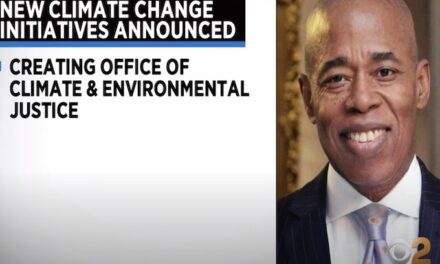
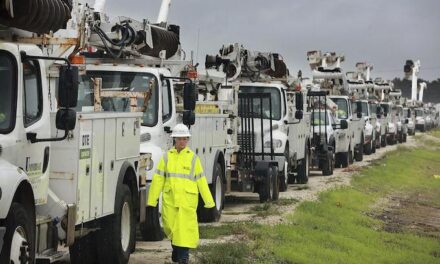
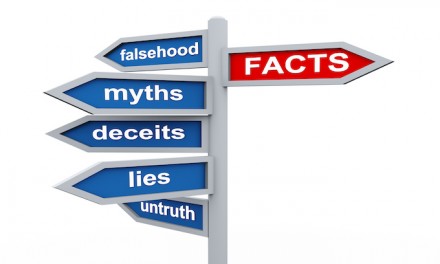






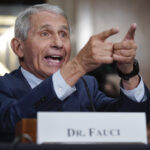

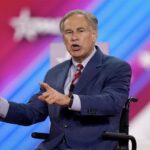

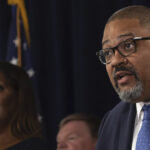
With how dems have shanked over the middle class for YEARS, i can’t see them ever winning those rurual areas back.
“We cannot, as the Democratic Party, become the party of the highly educated and folks who live in dense areas,” said DFL Party Chairman Ken Martin.
The Democrat Party wins most of their followers because they are ill-informed or have low intellect. Their propaganda or narrative works on an emotional level, not on the intellectual level.
People of all races and backgrounds are becoming more educated and informed, so the Democrat Party’s Lies, Cons and Deceptions are no longer working.
“I’ve got people calling me and asking for advice, but if I tell the truth it’s just too negative,” said Democrat rep. Peterson,
So he Lies.
The traitorous, dishonest, destructive, socialist Democrat Party revolves around and its philosophy is based on Total Control, Hate, Lies, Cons, Deceptions, Immorality and the lack of Integrity, Ethics or Honor.
Socialist Democrats are willing to destroy themselves and everyone around them before they will agree to compromise their failed policies and their destructive self-fabricated lies and beliefs.
One does not have to be very bright to see the deliberate treasonous, destructive and stupid policies and agenda of this socialist Democrat Party and their puppet president Moe Biden. People are waking up and clearly seeing the Lies, Cons and Deceptions of this socialist Democrat Party and they are switching to the Republican Party.
AND how can they keep claiming that they “ARE the party of the highly educated”, when time and time again, THEY KEEP BASHING THEIR OWN voting base for being toO STUPID to do anything else..?
Sure they can—I’m praying for a sinkhole.